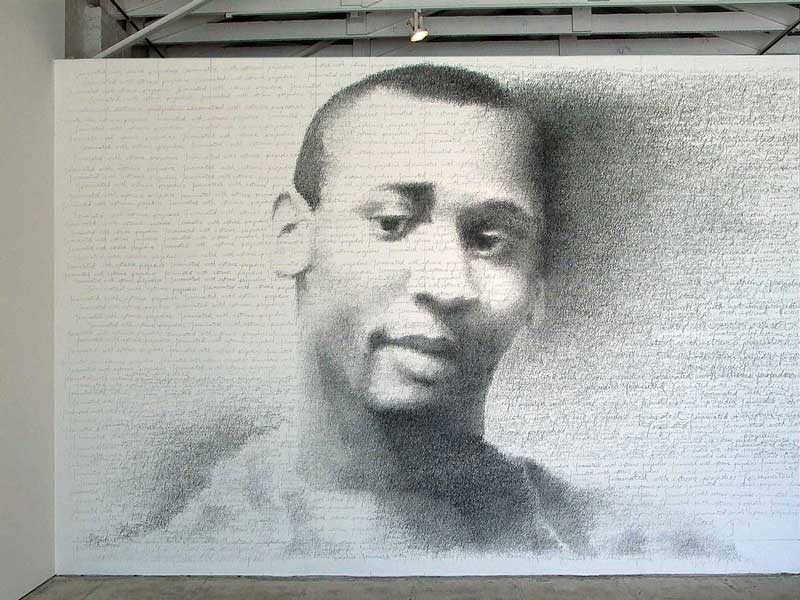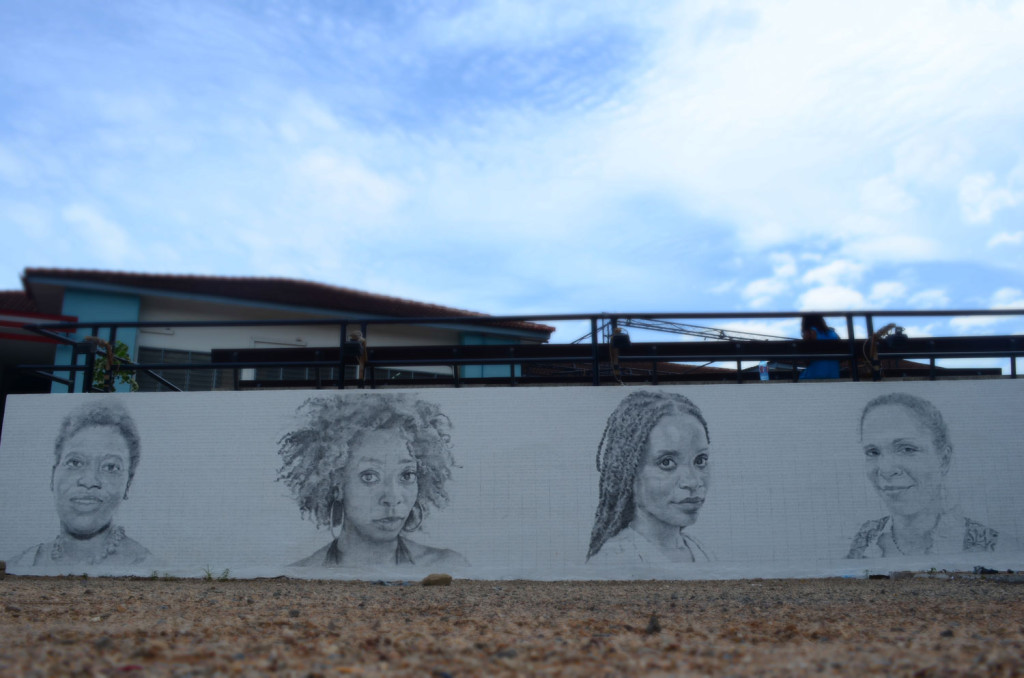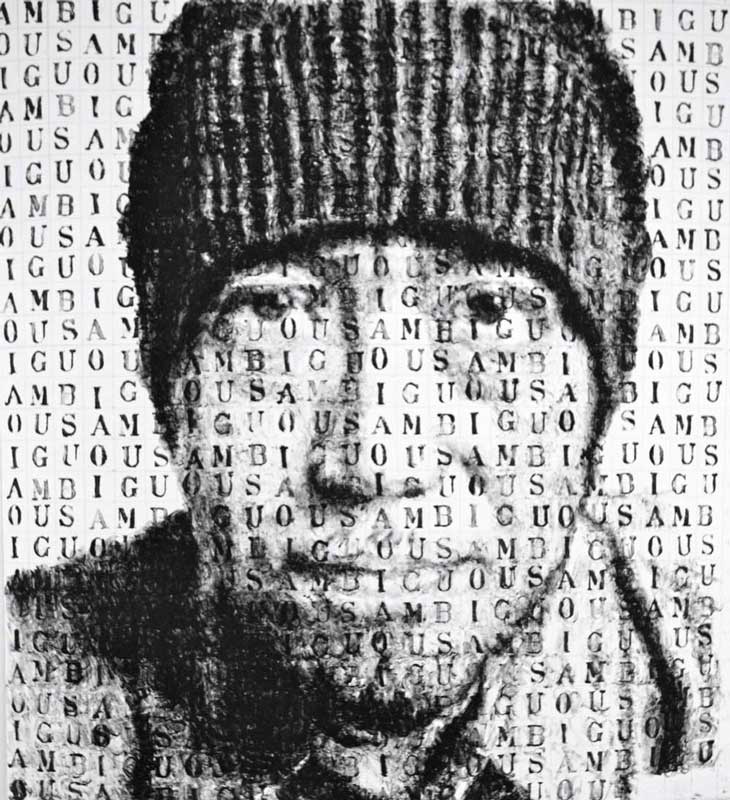
“The human body is the best picture of the human soul.”
– Ludwig Wittgentstein
KENTURA DAVIS
Kenturah Davis is a Los Angeles artist and has produced work for exhibitions, artist collaborations, film and commissions. The core of her work oscillates between portraiture and design, exploring themes related to the body and the formation of identities. Recently she completed her first public commission at Alliance Français d’Accra, Ghana. Davis is the featured visual artist in the syndicated documentary, “Ray Charles America” that aired on A&E Network. She was a collaborator in Andrea Zittel’s Smockshop and Panelshop projects, designing product for the artist enterprise and representing the group in national and international exhibitions. The 2011 exhibition, Mis-Design, at the University of Melbourne’s Ian Potter Museum included two works by Davis.
Artist Statement:
The core of my work oscillates between portraiture and design, exploring themes related to the body, language and the formation of identity. From rendering a figure by writing a text repetitively to sewing highly individualized uniforms, my work unpacks layers of meaning embedded in how we socialize and perceive one another.
Employing the use of the written word to make drawings came about during my detour away from painting, as a way to investigate the mechanics of construction our personal and collective identities. I stripped my work of color and gesture and instead began to construct works on paper by layering hand-written text. The process of writing a text in repetition to compose the portrait became a metaphor for the way that we acquire and inhabit language. It also extended the work into the realm of a performative act, in which the process of making it is as important as the finished piece. I see the drawings as a series of conversions where the subject has first been rendered with light through the photographic process, then carefully converted to text as I filter the photographic information through my eyes and hand.
Understanding that the advent of the written word arrived as the capacity of human memory deteriorated situates the portraits as a kind of documentation that might extend the reach of collective memory and historical consciousness. My first experimentations were composed with hand-written text, some cursive some hand-printed. Following these early text drawings came further exploration using rubber stamp letters. In the way that the hand-written works engage with the history of penmanship and an individualized method of mark-making, the stamp drawings connect with industry, printmaking and a broader dissemination of information.
Regarding Four Women (2014): I arrived in Ghana November, 2013. I found myself listening to a lot of Nina Simone, so when the opportunity came to propose a mural for International Women’s Day, I immediately thought of Simone’s “Four Women.” The emotion of this song intensified my experiences as I traveled throughout the country, visiting the slave castles in and grappling with the history of the African diaspora. The theme Alliance Francaise d’Accra selected for the mural, “Women of the World”, encouraged me to consider subjects of today. Using Simone’s song as a point of departure, I identified four African women who live in Accra and were doing interesting work that contributes to the community. It was important that they not be “famous”; rather, i tried to find a balance between anonymity and admirability.Ultimately, I wanted to create a work of art that portrayed accomplished women with very different personal stories and are tied to the strength and resiliency that Nina Simone conveys in her lyrical narratives. They are symbols of the many more amazing women I’ve encountered in Ghana.
Integral to the process of making the drawing, I had to also identify a text that I would use to render the four women. I finally selected one suggested by a friend; a quote by feminist, Audre Lorde: “I AM DELIBERATE AND AFRAID OF NOTHING.” This simple, yet potent phrase served the dual purpose of declaring their sense of purpose and functioning as a meditation by which i could absorb its meaning for my own benefit. The process of writing a text in repetition to compose the portrait was a metaphor for the way that we acquire and inhabit language. It extended the work into the realm of a performative act, in which the process of making it is as important as the finished piece.Understanding that the advent of the written word arrived as the capacity of human memory deteriorated situates the portraits as a kind of documentation that might extend the reach of collective memory and historical consciousness.
Regarding the Latitudes series (2013-2014): This series is a group of modular drawing engaged with the history of writing. The texts that make up the first Untitled drawing are excerpts from art history books that survey American art. More specifically, they are writings about Black modern and contemporary artists. I wanted to look at how we have been included, excluded and pigeonholed in the discourse of American art, across all different genres. This first section of the drawing is a self portrait, so it is partly about situating my own practice and path as an emerging artist in that context. Understanding that the advent of the written word arrived as the capacity of human memory deteriorated situates the portraits as a kind of documentation that might extend the reach of collective memory and historical consciousness. I see the installation itself as creating a kind of library, even an institution, which animates a particular history relevant to the subject of the portraits. Considering the economics of scale, it was of particular interest to make a drawing that could expand and contract, to undermine that challenges posed by working, storing (and acquiring art) in a large format. Drawing text across hundreds of separate sheets of paper, gives me the flexibility to make a piece that extends across large walls. The resulting experience is one that is completely cinematic, immersive and panoramic, which shifts depending where one is situated within it. From afar, it appears to be peculiarly photo-realistic portraits, but in close proximity it breaks apart into hundreds of squares that are, in actuality, cursive texts. The title Latitudes associates the panoramic format of the drawings with mapping. It also references its alternative definition as having “freedom from normal restraints or regulations” due to its potential to exist unrestricted by spatial limitations.
Courtesy: Papillion Gallery, Los Angeles.
www.papillionart.com





